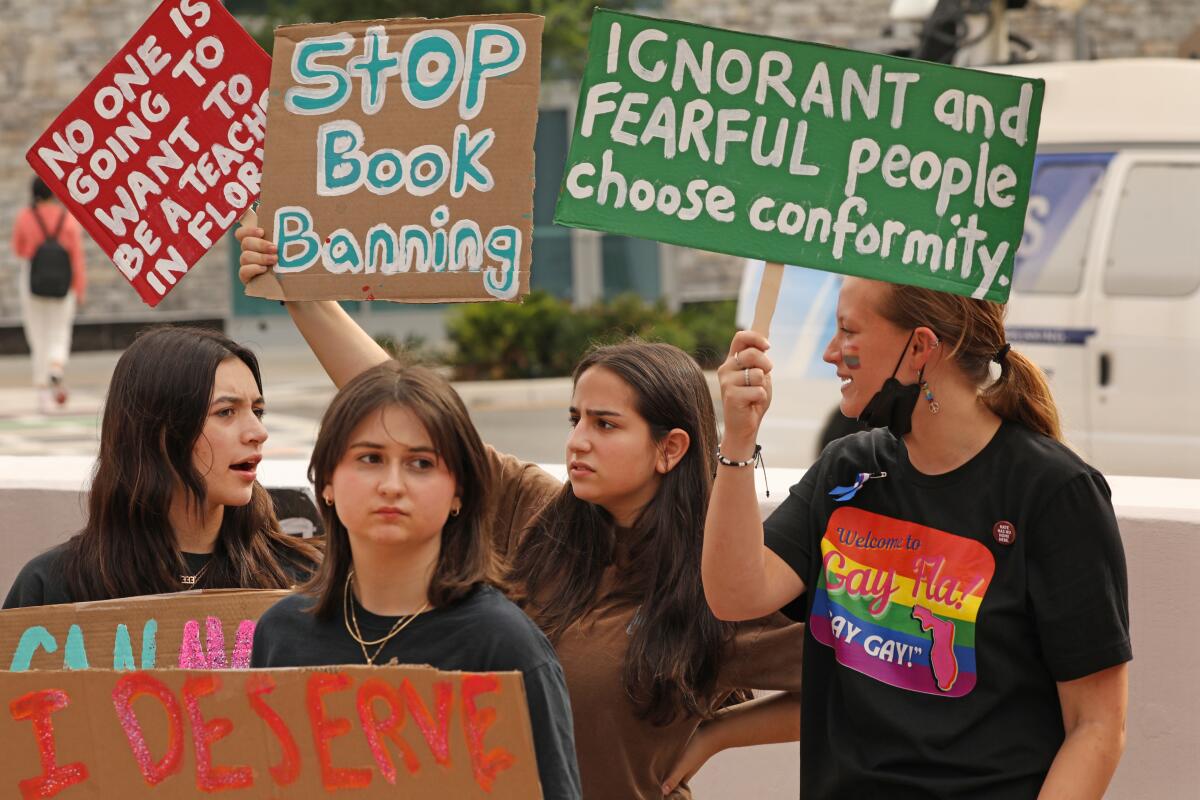It is a fact that, in this country, crisis is constant and overwhelming. Each day, it seems, the news is announcing a new crisis facing the country: a mental health crisis, a drug epidemic, public health crisis, gun violence, etc. What many of the larger issues facing America often have in common, is they often lead to heated disputes on the ways in which we should address the crises. In fact, a large majority of the conversations and decisions surrounding different issues facing the country are politicized. Political identities like Democratic or Republican, conservative or liberal, often determine personal standings on different topics. Divisions like partisanship make it extremely difficult for people, especially leaders, to come together on problems that need solving. In the case of book banning in America, increased division between people and partisanship are influential factors in the heated disputes that often occur over the matter. When pressing issues like the censorship of literature are spoiled by the confines of politicization, many different voices and perspectives are ignored in the conversation. Book banning is certainly not a black-and-white topic, nor does it have a yes or no answer. Considering that “there were at least 2,532 book challenges from July 2021 to June 2022, affecting 1,648 book titles,” censorship is expanding rapidly. So why should the conversation be so rudimentary, so two-sided?

I wanted to create a partial solution to the increasing politicization of book banning by coming up with an event that was neither liberal, nor conservative. It wouldn’t have a political agenda, and it would not be a place for partisan discourse. I want my solution to this problem to be open-minded, neutral, and unbiased, to the best degree possible. In terms of many of the issues and crises plaguing America, if more people were to enter a neutral environment with each other, or consider the other side’s viewpoint, we would be looking at a much less partisan country. “Word-wars” and spewing insults at the other side is never going to make progress on an issue that is so important to education. Fostering open environments and no-stakes conversations would be a lot more beneficial.
For my genre remix project, I decided to write a letter to propose an on-campus event called the Banned Book Fair, which would be a group of booths each dedicated to a different topic inside of book banning. I wrote my proposal to the Library Student Ambassadors because they are the most relevant group of people to my goal. If I were to be actually planning this event, I would go to this group of students because they are typically involved in events concerning the library at the College. I wanted to reach out to fellow students because I feel that they would share the same urgency I would and, as library ambassadors, would be familiar with the topic of banned books. I decided a written letter would be the best way to communicate the urgency and importance of an event like the Banned Books fair. It gave me the space to explain why the conversation around banned books is more nuanced than it seems and why that is something that can be addressed and highlighted in a one-day event. Letters are typically addressed to a person or people and they almost always have a specific purpose that is outlined in the body of the letter. Though emails are now the more popular form of written communication between people, a letter presents an opportunity to be more thorough and descriptive in my writing.

A notable constraint of my letter is the fact that I will not actually be sending it. It will eventually be read, but not by the Library Student Ambassadors. Even though this could be seen as diminishing the point of addressing the letter to the ambassadors, people will still read it for one purpose or another and understand the letter’s message and intentions. Another constraint is the length of the letter. As it would hypothetically be going to a group of students, I cannot write it to be a 7-page essay. Time is valuable and letters that span multiple pages are often not well read or attended to. As for the actual event idea, it poses much more constraints than that of the letter. If I were to be proposing and planning a banned book fair, it would take much more consideration of logistics and I would need more people on my side. An event about a topic that is contested in society also poses the question of attendance to the event. Would some people be steered away from a fair simply because it is about banned books? Would the event only attract a certain crowd of people?
My DIAC titled “To Ban or Not to Ban,” was about the same topic, the censorship of literature. I remixed my DIAC by taking what I had learned from writing my original essay and transforming it into a persuasive letter. While my DIAC was more informative and research based, I was able to take more of an opinionated and argumentative stance in my letter. I brought in my own perspective on the topic of banned books and my opinions on how the conversation should be handled. I offered a plan and explained the urgency for the event. In writing a letter to a student organization on campus, I was also able to make the letter more personalized to the College of Charleston.
No comments yet.